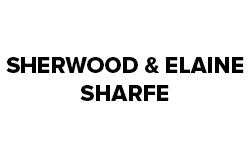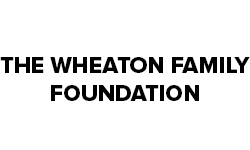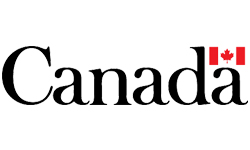LEARNING PLAN
In this inquiry students will:
- Learn to consider another point of view
- Practice different ways of solving problems
CITIZENSHIP INQUIRY
Curricular Outcomes
- Analyze the cause of disharmony and ways of returning to harmony. (PA1.2)
QUESTIONS TO GUIDE THE INQUIRY
Essential Questions – Guiding Questions:
- What makes a rule fair?
- Why might one person think a rule is fair and another think the same rule is unfair?
- Do rules have the same impact on every person?
- Why are rules different from place to place?
- Why would rules need to change based on their location?
- How do rules help people live peacefully together?
- Do rules help or hinder?
- How do rules change?
- Why would a rule need to change?
- How do I become a contributing citizen?
- What responsibility do citizens have to follow rules?
CONNECT TO TOPIC AND SURFACE STUDENTS’ THINKING ABOUT …
This section introduces the concepts and helps teachers gain an understanding of the current thinking of the class. Present essential questions and allow students to think about and talk about. Student answers will give teachers a baseline or beginning understanding of the amount of specific and incidental teaching required to explore these outcomes. Vocabulary is introduced and noted here. This section frames the “We do” portion of the lesson where teachers guide the initial structure of the inquiry.
PROCESS
- Pose the essential and guiding questions and allow students to discuss their thoughts on the matter.
- Determine what the students know, understand, need to be able to do to master/answer the essential questions (connect to content). Additional guiding questions can be added as required. Students are encouraged to add their questions to the others.
- Create Know, Want to know, Learned Chart – identify vocabulary that requires development.
- Surface any additional questions students might have as a result of their discussions about the essential questions.
- Post student answers for reflection at end of study.
Present essential questions to students at the start of the exploration of study. As students make meaning of the outcomes, the answers to these questions will frame their thinking at the end of the unit of study. Determine what the students know, understand, need to be able to do to master/answer the essential questions
- Create Know, Want to Know, Learned chart to track learning throughout citizenship study.
- Eyewitnesses at an accident often describe the same situation in very different ways. Why do people see the same event differently?
- What does point of view and perspective mean to students? Have students give examples.
- What do students consider when trying to reach an answer to a problem?
- Present essential questions to students and chart their answers. Note them on the K-W-L chart for follow-up during the lessons.
- Surface questions that students have about rules.
- Identify vocabulary understandings that must be developed.
DEVELOPING UNDERSTANDING
This section is the core of the lesson. It describes the main activity(ies) involved. In inquiry-based learning, the teacher facilitates the activities that lead to the understandings that student make of the essential questions. It is critical then, that students be allowed to raise questions and talk about issues that develop as they explore the learning activities. This forms the “We do” “They do” section of the inquiry where students are finding answers to the overarching questions and then searching for themes and patterns as possible explanations.
- Students will understand that situations can be interpreted differently because of a person’s perspective or point of view.
Have students identify and/or role play how they demonstrate and model respect for themselves and others in the classroom and school. (e.g., taking turns, using kind words and actions, sharing, listening to others, etc.).- Have students identify decision-making approaches which may result in positive outcomes and decision-making approaches which may result in less positive results. Explain their thinking.
- List examples of how peace and harmony are exemplified in the classroom, playground, and family.
- Gather examples of causes of disharmony in the classroom, the playground, and the family.
- Divide student answers and examples into positive and negative results and chart answers.
- Examine the examples provided and identify how person was feeling. Give evidence relating to body language, tone of voice, etc.
- Is there another interpretation of the situation?
- Have students develop a rule or guideline that they might follow in future situations.
- What questions should students learn to ask about situations?
- Do I have all the information?
- Is there another perspective?
- What are the consequences of my behaviour?
APPLY AND EXTEND KNOWLEDGE
This section includes ideas to extend the inquiry or apply concepts explored. This section may also include additional reflective questions to promote student connection to the topic. This forms the “You do” section of the inquiry – may be “you do it collaboratively” or “you do it alone”. Invite students to extend their thinking beyond the classroom discussions and inquiry experiences. Pose additional reflective questions that have been raised to encourage critical and creative thinking.
- Identify examples of situations in the family, classroom, and the playground that were interpreted differently. What were some possible points of view?
- Identify solutions to situations cited.
- Describe reasons for recognizing those people and events designed to work for harmony (i.e., veterans and soldiers on Remembrance Day, conflict managers in the community and school.)
- Have student demonstrate examples of behaviour that shows respect
EVIDENCE OF LEARNING
This section suggests ways in which students may demonstrate their understanding. Ideal demonstrations will be in authentic performance tasks. Each citizenship study may have its own smaller assessment piece or be compiled to support one larger performance task assessment. Assessment pieces vary, but should allow students to demonstrate their understanding in a variety of ways.
Have students reflect on their original answers to the questions.
- Has their thinking changed? Why?
- Why is it important to know this information?
- What will they do with their learning?
- Present students with situation that requires some resolution.
- Have students identify possible varying perspectives of people involved and demonstrate alternate solutions.
- Students should be able to indicate behaviours they might look for that would give them feedback regarding the success of their solution.
INFORMAL INDICATORS OF UNDERSTANDING
- Revisit K-W-L chart as classroom to see if questions and want to knows were addressed
- Note when students try to take an alternate point of view in problem-solving either in the classroom or on the playground.
STUDENT CITIZENSHIP JOURNAL OPPORTUNITIES
Students are keeping a Citizenship Journal to reflect upon their developing views of citizenship. This section provides prompts for student journals. Students are invited to choose one that interests them or propose their own. Students can also respond to any of the essential questions.
Students are encouraged to respond using a variety of genres.
- Why might one person think a rule is fair and another think the same rule is unfair?
- What is one rule that you would like to see changed? Tell why and how you would change it.
- Describe a time when you saw something very differently from someone else? Why do you think this happened?
© 2024 Concentus Citizenship Education Foundation Inc. All Rights Reserved.










